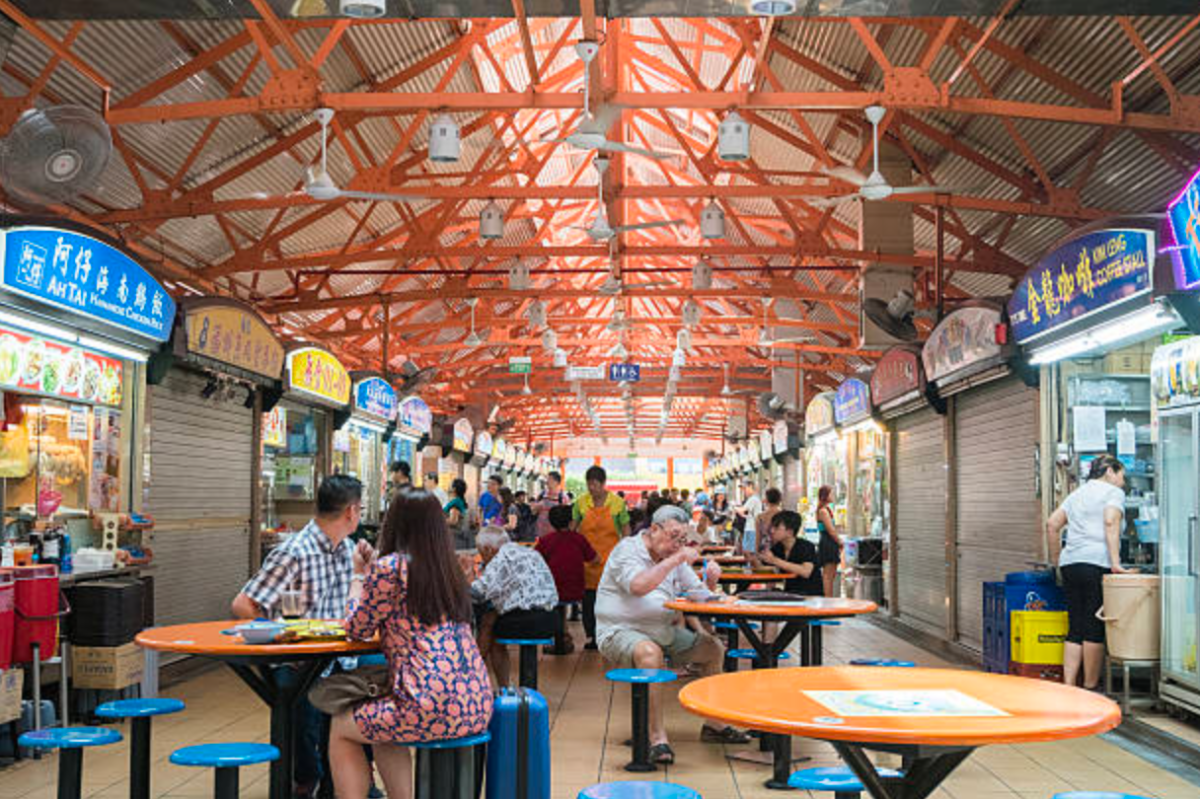Coming from a family of mixed ethnicity, my mother born Singaporean, more specifically Peranakan, and my father an American, it has always been interesting attempting to dissect and decipher the foods of a vast culture I will never be fully able to understand. Spending periods of my life in Singapore really opened my eyes, even at a young age, to just how diverse and unique Singapore is, with Malaysian and Chinese influences taking a firm hold all throughout the region. Despite the entirety of the nation existing on a miniscule island, many cultures have flourished there for several decades. When reproduced in the United States, many restaurants such as ‘Hawker Center’ and ‘Mamak’ prospered. However, the real gems of Singaporean food and its deeply rooted traditions come from Hawker Culture and street food. Those who are lucky enough to experience Singaporean food culture firsthand know it is the true food capital of the world.
When meeting a friend in Singapore, it is common to hear ‘have you eaten?’, rather than the familiar ‘how’s it going?’ of the West. In fact, in many Asian nations this is commonplace. At first, it might seem outlandish but the emphasis placed on food in both the social and familial realms makes for a culture that is highly conducive to such a rich development of cuisine. My father, Jeff Maxcy, a foreign area officer in the United States Military who spent extensive periods of time in Singapore said that, “From a cultural standpoint, whether Americans accept it or not, the universal human language is the language of food and Singaporean people get that.” He added, “These cultures that live probably more harmoniously than anywhere in the world, one of the primary vehicles they use to advance that harmony is a significant emphasis on everybody’s food, they really celebrate food and each cultures’ food.” This all points towards the notion that such an emphasis on food isn’t just a matter of survival, but is also a product of care and exploring the ways in which others can care for one another. This is ultimately what makes for such exceptional cuisine in the city-state, for if one is considered hungry, than everybody is hungry. In simpler terms, it is a product of the instinct to mind and toil for each other that is so heavily ingrained within the culture. Oftentimes, especially in the U.S., this is not stressed enough to be considered a general responsibility.
Although food’s notable place in Singaporean culture is largely due to its sheer quality, it can also be attributed Singapore’s remarkable diversity. Whether it be the many Cantonese influences, or the common Malaysian food stalls featuring satay and flakey roti, it is undisputed that the various Hawker Centers and streetfood scenes of Singapore are melting pots compacted into tiny areas that are often 40 minutes apart from anywhere else you could imagine visiting in the city.
A brief listing of the predominant genres of food in Singapore include Nyonya, which often is attributed as being the food culture of Singapore, though in actuality it does not take up the majority of the traditional foods sold. Other influences include Indian, Malaysian, and Chinese. The results of having so many different subsets of people in Singapore are the highly distinctive dishes and shops all throughout the city, many of which have even been awarded Michelin stars. One of the stalls included on this list eventually lost its star, though it once had the cheapest available meal of all to have earned the award. On that subject matter, much of the cuisine in Singapore is surprisingly cheap. This is appealing to many, as it is unnecessary to dole out large amounts of money for good food as it is in other cities. My mother often recounted to me as a child that the food even in schools had much variety, the courtyard containing many stalls where various options including ramen, and astonishingly high quality vending machines were kept. Of course, this was at a very reasonable price so all of the students were able to afford the luxury. Once again, this provides much insight into the place of food in the lives of Singaporeans, and just how valuable it is, not just in terms of quality, but of representation of the culture itself.
In the end, Singaporean food has a different meaning to everybody who resides in the nation, but also to the outsiders who have only gotten a short glimpse of what all it provides, and the values that stand behind it. Singapore has had a rocky history, filled with colonization and various degrees of suffering, but today it has become not just a food center of the world, but an economic hub and a nation home to some of the most resilient people. Paying respect to not only what Singapore encompasses, but appreciating just how far it has come in terms of history and certainly its future prospects is incredible. Hopefully in due time the culture and foods of this region will be much more understood, and loved, as those who have spent their lives alongside it do.



